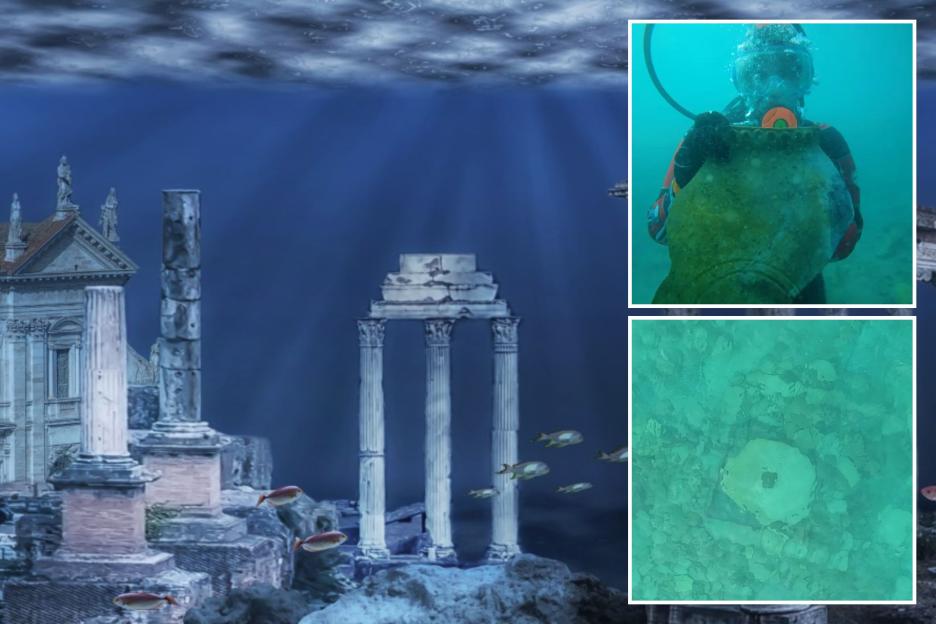Table of Contents
- Discovery of the Sunken City
- Artefacts and Findings
- Historical Significance
- Muslim Cemetery Discovery
- Settlement Expansion Evidence
- Conclusions
A stunning real-life Atlantis-style sunken city has been uncovered beneath a lake by researchers – after it was devastated by an earthquake.
The groundbreaking discovery was made beneath the surface of Lake Issyk Kul, the eighth deepest lake on Earth, located in eastern Kyrgyzstan.
 Researchers found artefacts and evidence of a lost city destroyed by an earthquakeCredit: Russian Academy of Sciences
Researchers found artefacts and evidence of a lost city destroyed by an earthquakeCredit: Russian Academy of Sciences
 Researchers found the city in four zonesCredit: Russian Academy of Sciences
Researchers found the city in four zonesCredit: Russian Academy of Sciences
Under the waters of Lake Issyk Kul, a medieval necropolis, fired-brick structures, and numerous remarkable ceramic artefacts were discovered.
During the Middle Ages, the lake reportedly served as a stopover on the famous Silk Road – a trade route connecting the Far East to Europe.
Scientists found parts of the remarkable city in four different zones of the lake, at depths ranging from one to four meters.
The site was submerged in the Toru-Aygyr complex, located near the northwest point of the lake.
In the first area, they uncovered several fired-brick structures, including one that contained a millstone, previously used for grinding grain into flour.
The team from the Russian Academy of Sciences also found remains of a public building, which they speculate could have been a mosque or a bathhouse.
One of the researchers stated, “The site we are examining was a city or a significant trading hub along a key section of the Silk Road.”
A representative from the Russian Geographical Society commented, “All this confirms that an ancient city truly once existed here.”
The region was severely affected by a major earthquake that submerged the settlement underwater in the 15th century, according to the scientists.
Researchers believe the area was abandoned by residents prior to the catastrophic event.
It remained deserted for centuries as successive generations forgot about it.
Eventually, nomadic groups are thought to have settled in the area, with some small villages still existing along the lake’s shore.
In the second zone investigated, researchers identified a 13th to 14th-century Muslim cemetery.
Burials were found that exhibited signs of traditional Islamic practices.
The skeletons were oriented northward, with their faces directed towards the sacred Kaaba in Mecca, Saudi Arabia.
Scientists discovered two bodies, a man and a woman, and are currently analyzing the ancient remains.
The third zone revealed signs of the settlement’s later growth.
This included additional buildings and an earlier burial site that was eventually replaced by newer structures.
In the fourth zone, circular and rectangular structures made of mudbrick were uncovered, along with layers of buried soil.
While the lost city of Atlantis is generally considered to be a creation of the Greek philosopher Plato – some believe that the legendary metropolis may have once thrived in reality.
 The city was found in Lake Issyk Kul in Kyrgyzstan (stock)Credit: Alamy
The city was found in Lake Issyk Kul in Kyrgyzstan (stock)Credit: Alamy
 It has drawn comparisons to the lost city of Atlantis (stock)Credit: Getty
It has drawn comparisons to the lost city of Atlantis (stock)Credit: Getty
Frequently Asked Questions
What is the significance of the discovery of the sunken city?
The discovery of the sunken city beneath Lake Issyk Kul offers insights into historical trade routes, architectural practices, and the cultural exchanges that occurred during the Middle Ages along the Silk Road.
How was the city submerged underwater?
The city was submerged underwater due to a major earthquake that struck the region in the








